Fall is becoming a busy time of year here at the Canoe Museum- from lectures, school programs and the annual Beaver Club Gala just on the horizon, all hands are on deck to provide a welcoming and memorable experience for our guests.I love interacting with the public. Greeting visitors at the door, working with children and answering questions as guests peruse the galleries are some of the highlights of a museum setting- but sometimes it’s just nice to bask in the solace of our artifact storage facilities.
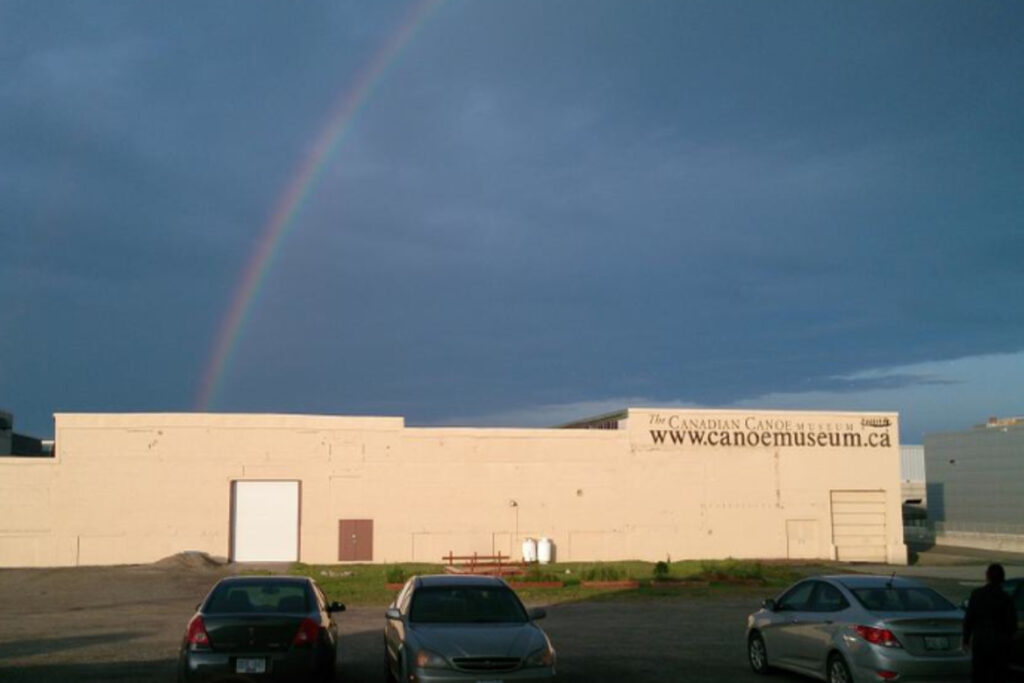
View of the Museum’s storage facilities. Look at the rainbow! I wonder if there is a bucket of gold hidden behind an old dugout?
The warehouse adjacent to the main museum is where approximately four fifths of the collect lay in storage. This is where I’ve had some of my most thought provoking discussions with our curator Jeremy, got completely filthy from handling and cleaning hundred year old dugout canoes, moved many a priceless boat and even took on the project of sanding/varnishing ‘the Beast’ (see last weeks post).
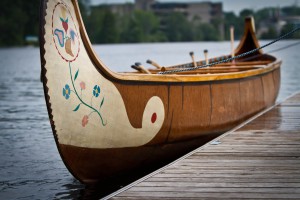
‘Birch bark like’ voyageur canoe, dubbed “The Beast”
I loved working away at the 32 foot simulated birch bark canoe. It became smooth and shiny after many a sanding. I must have done a decent job as I have a brand new project- a true restoration!!
Tada!!!
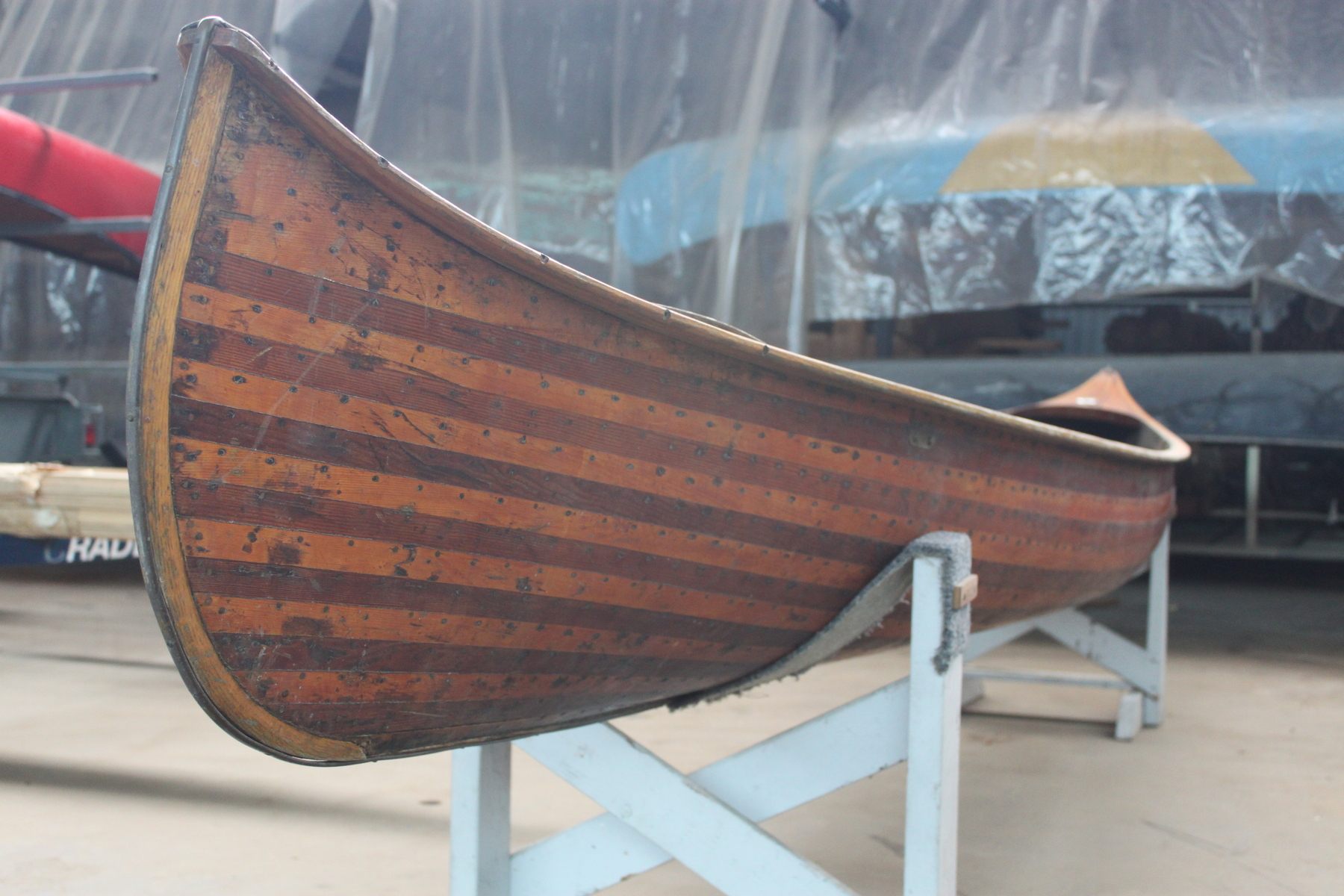
The museum doesn’t often take on restoration projects, to hold true to the artifacts history, but before being accessioned into the collection, the Dewhirst family Lakefield Canoe had already been partially refinished at an earlier time. As you can see the gunwales have seemingly been belt sanded down so extensively that the heads of the screws have been squared right off! Also, it has nearly a centuries worth of hardened and weathered varnish which makes it nearly impossible to distinguish the striped pattern.
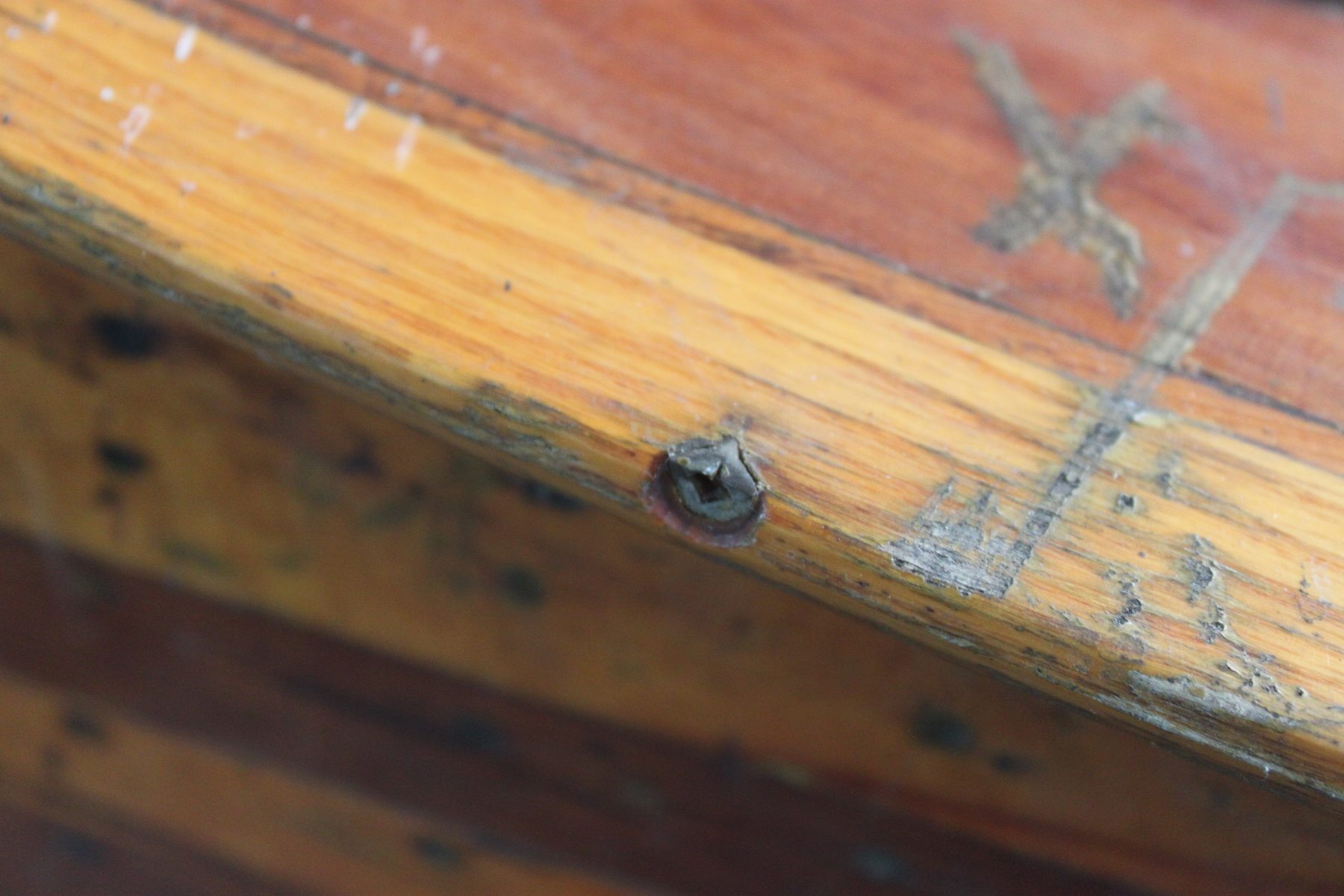
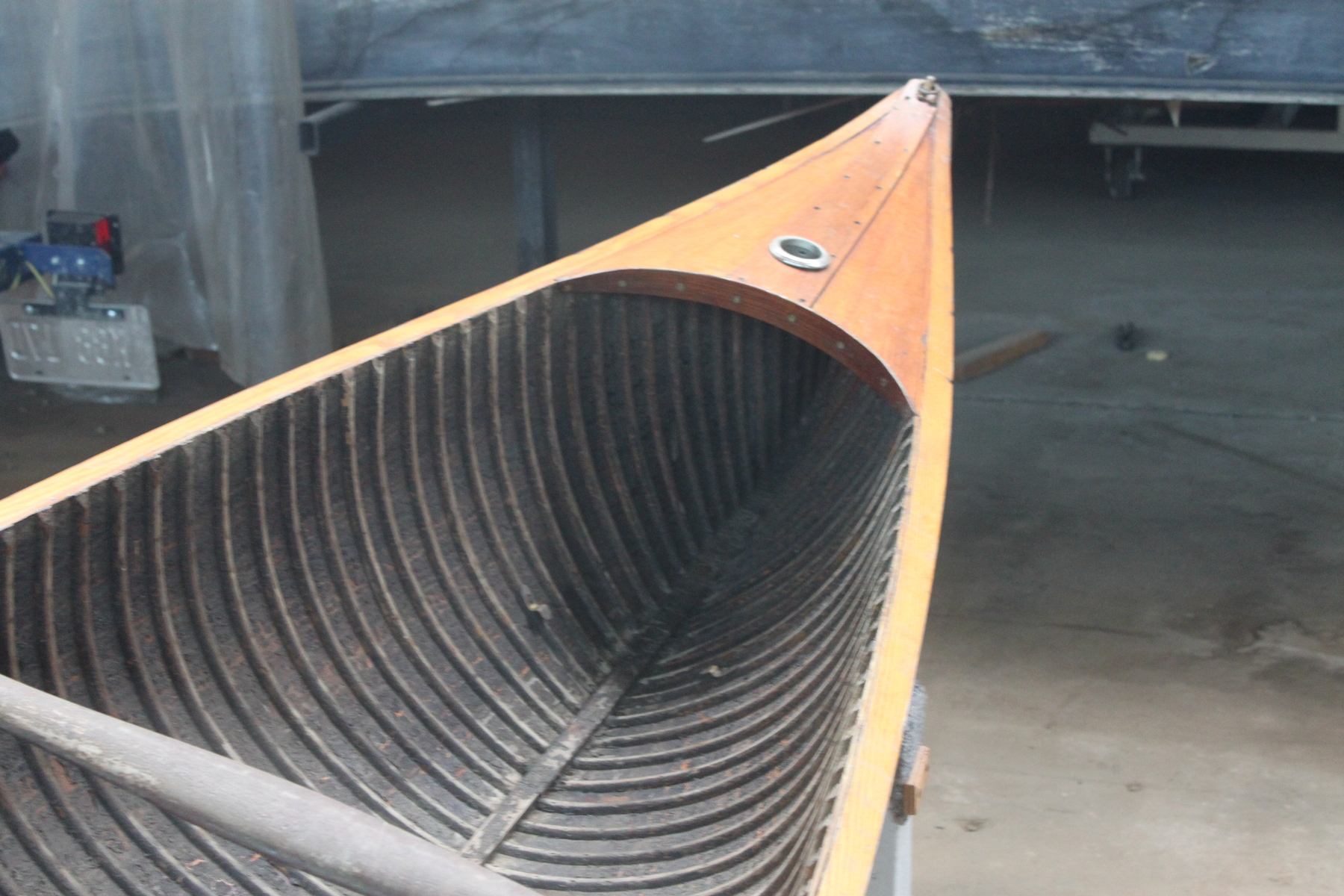
I have nicknamed it, “the PJ canoe” because the beautiful contrasting pattern of wood strips. Referred to as “Light and Dark Strip Canoes” in Lakefield Canoe Co.’s 1923 catalogue, the PJ canoe has an alternating pattern that makes the canoe look like its wearing a pair of old man pajamas. It’s gorgeous in its weathered state, but I cannot wait to see it back to its former glory!
Snapshot from the catalogue…if you can imagine brand new this boat would have only cost just over $100 and that’s including two paddles!
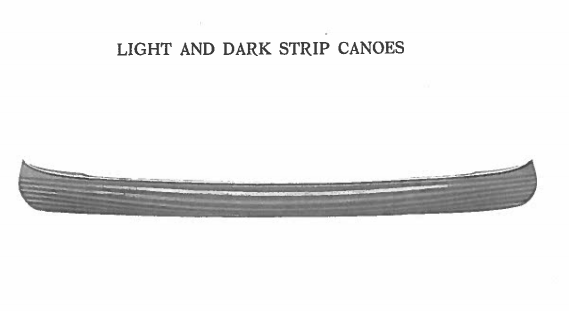
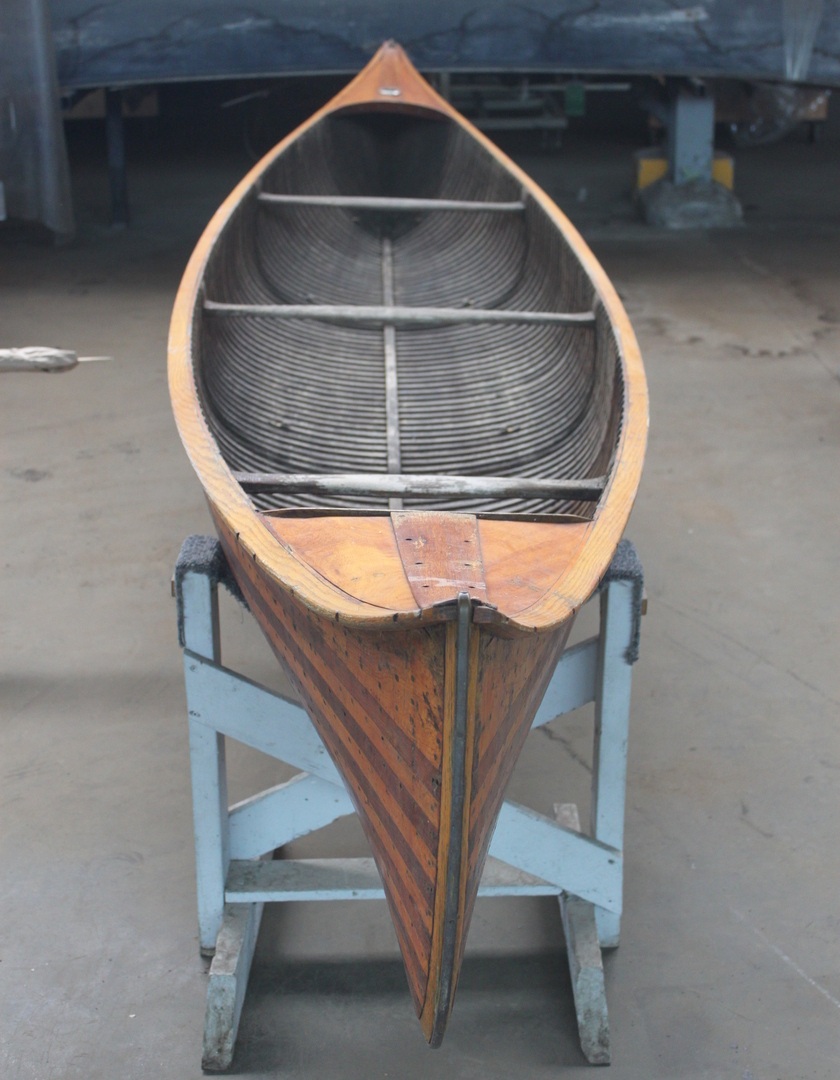
Now it will take much time and guidance to get it there, but I’m willing to try!!
And so my work begins! I am a sucker for to do lists- as everyone at the Museum knows because I am notorious for leaving my scrap paper in strange places. Anyway, I have made myself one for this very project…
Materials: natural citrus varnish stripper, gloves, brush, glasses and putty knife.
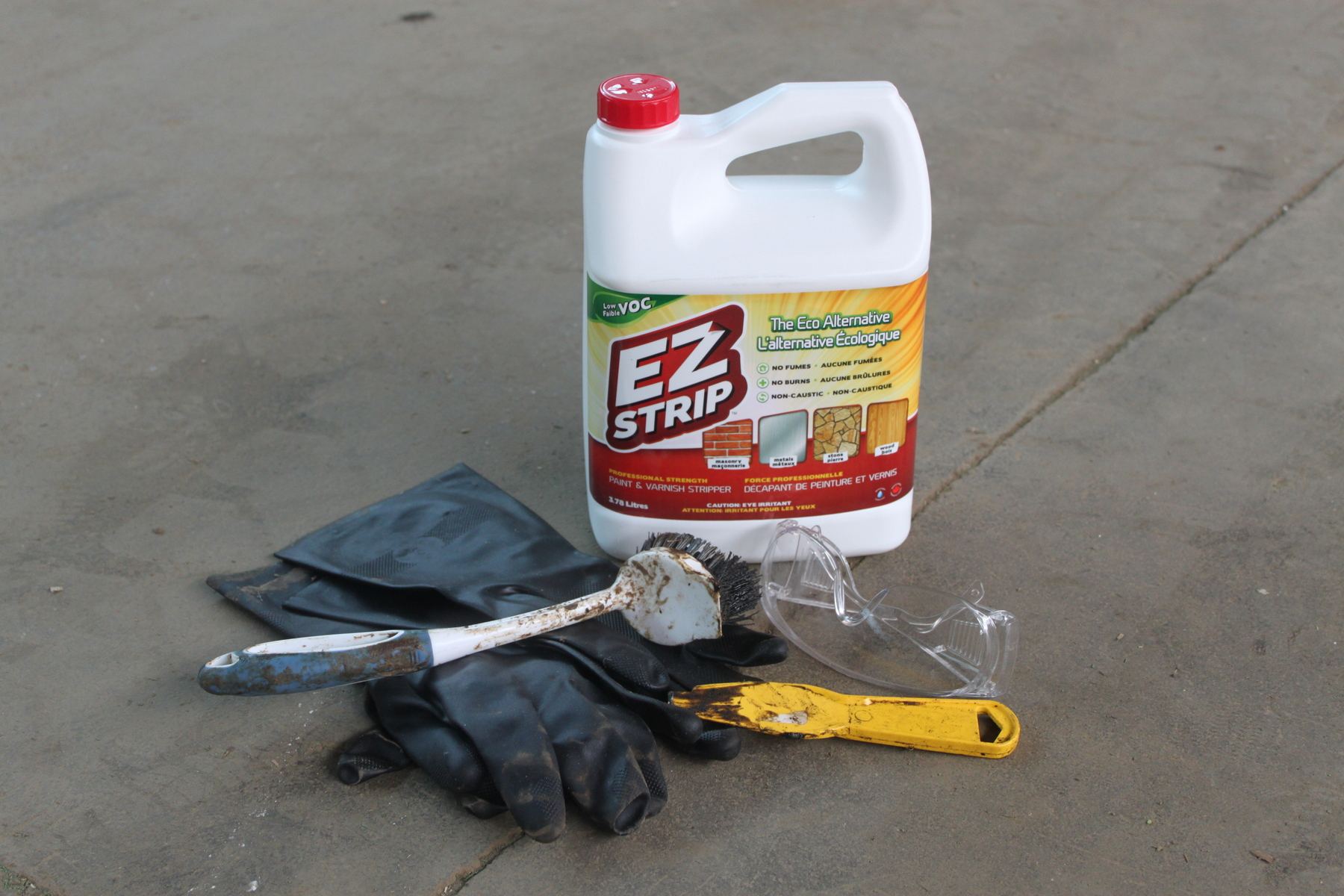
Step one: Dump a bunch of strip on a centered area.
Step two: Use the brush to gently work the strip ‘goop’ into the wood and all crevices.
Step three: Wait 15-20 minutes
Step four: Ever so carefully use the plastic putty knife to lift out the thick goop, always running it along the grain.
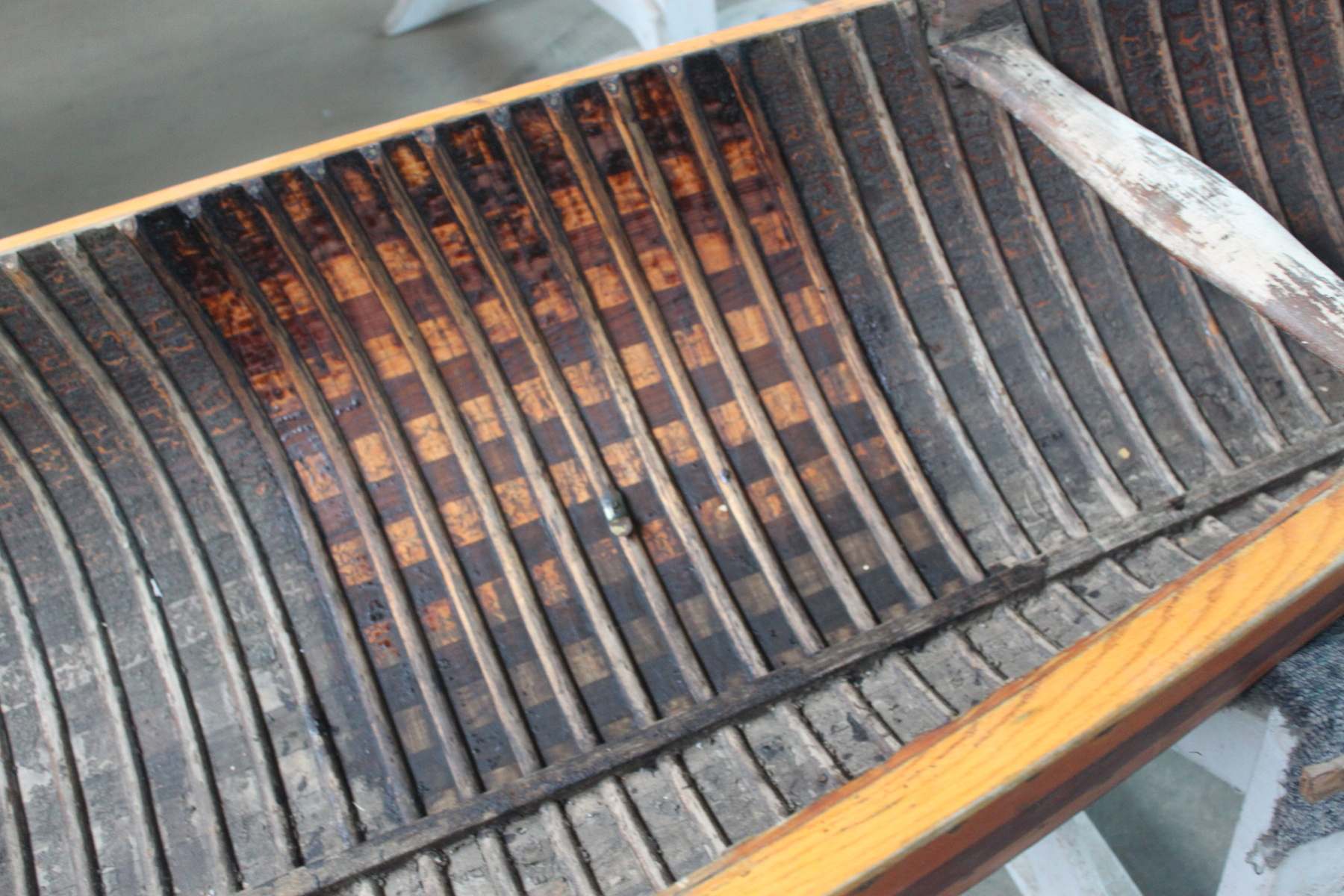
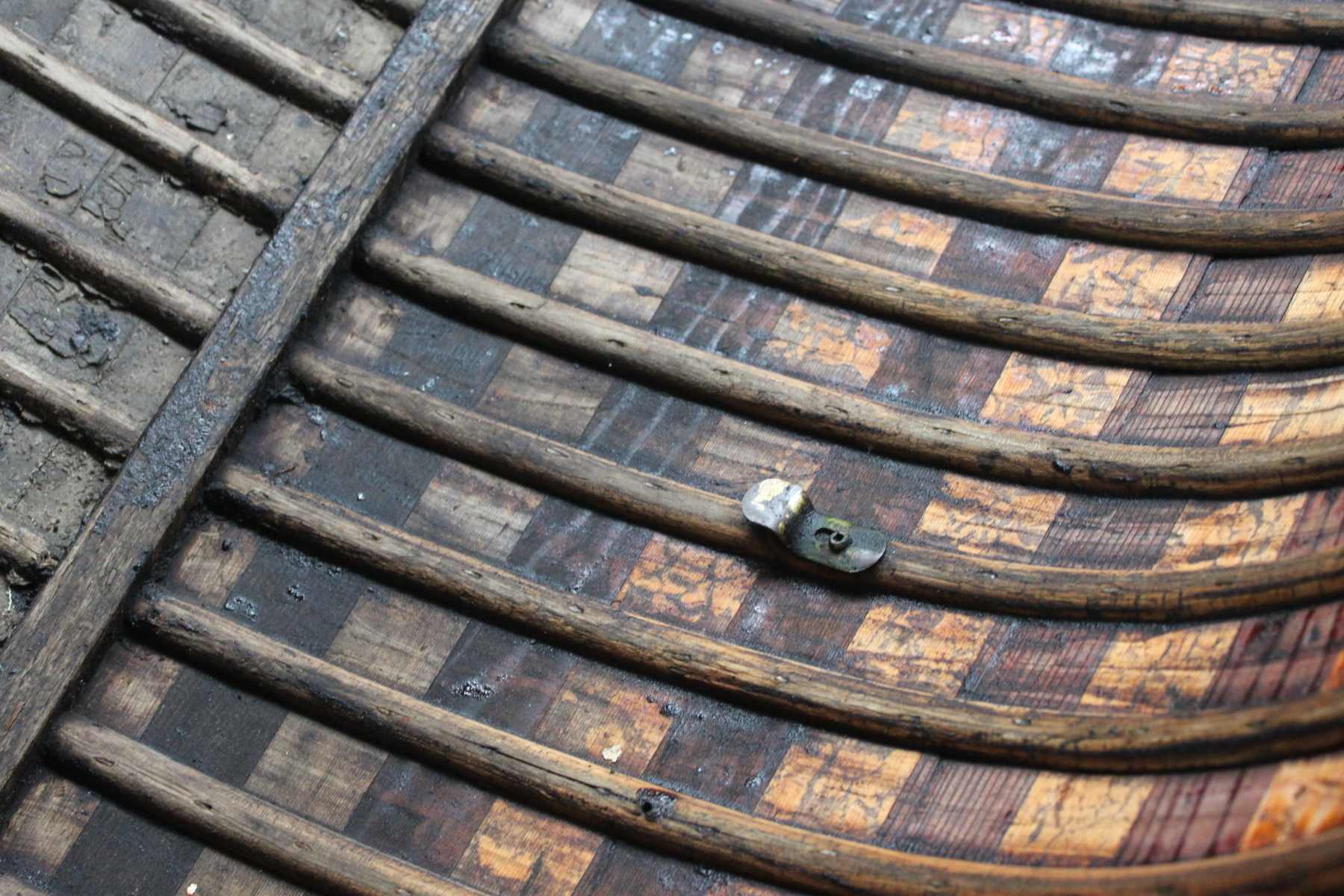
Step five: REPEAT! ‘till you have natural wood …. I have yet to reach step five!
Step six: Lightly sand and varnish
Voila!
Ok maybe I’m getting ahead of myself…there is a lot of work to be done for sure! I wan’t to do it right and so I’m going to work away slowly but surely. I can’t wait for weekends and spare time during the week so that I can fully dive into this project!!
Stay tuned and hopefully in the coming months I can share a few shots of the fully restored beauty!






